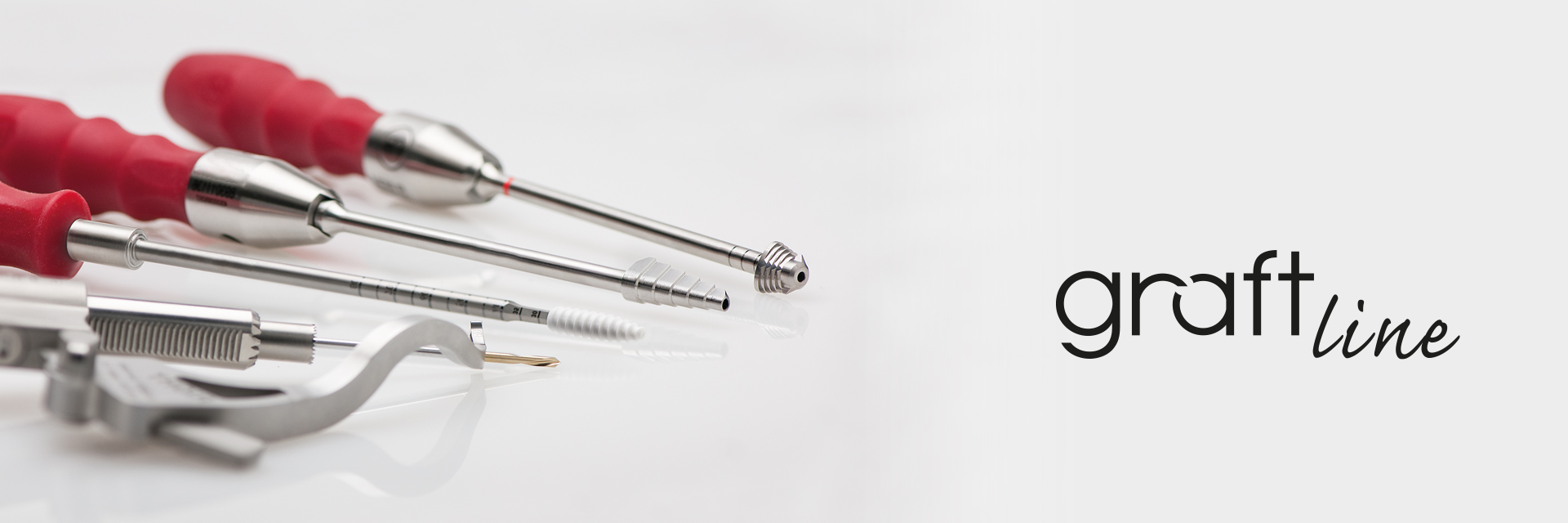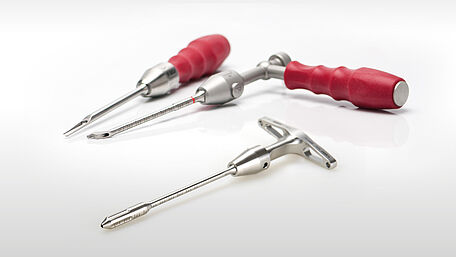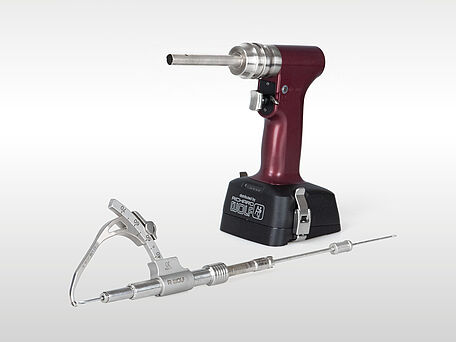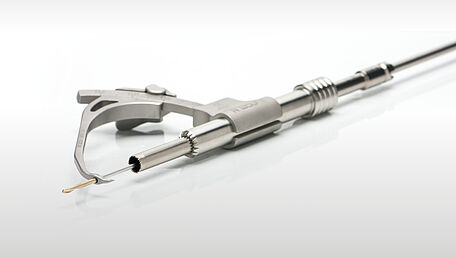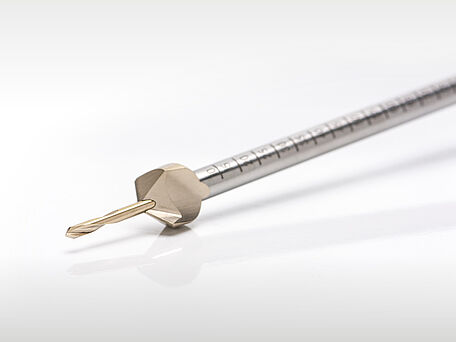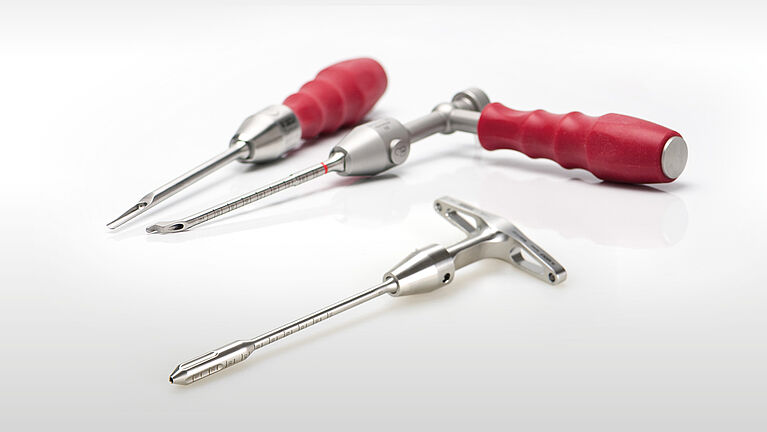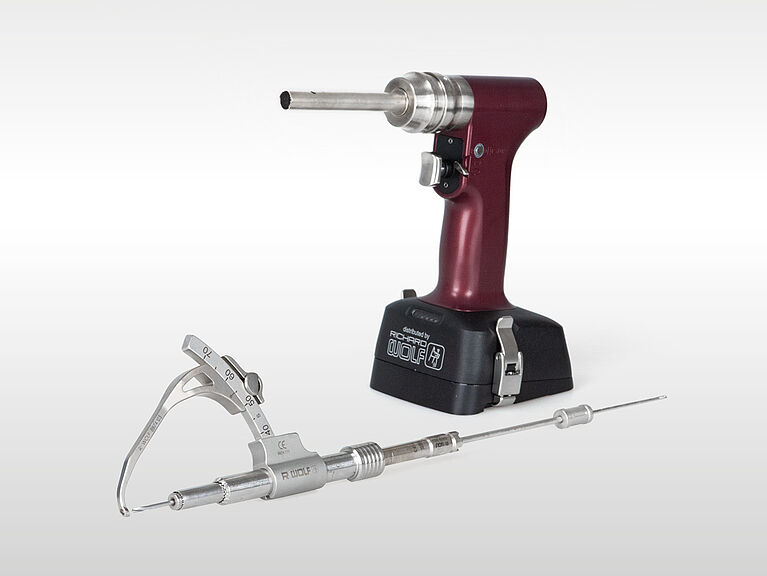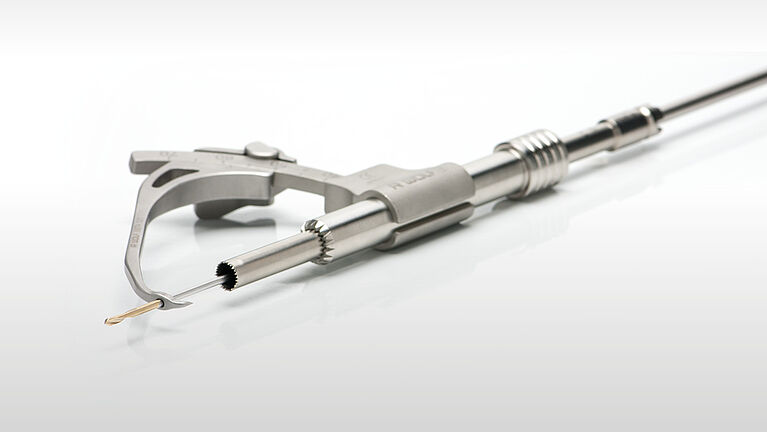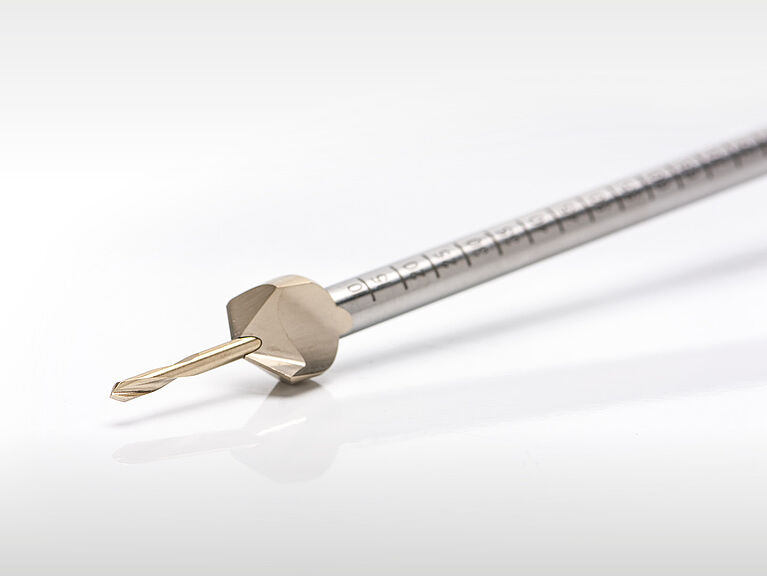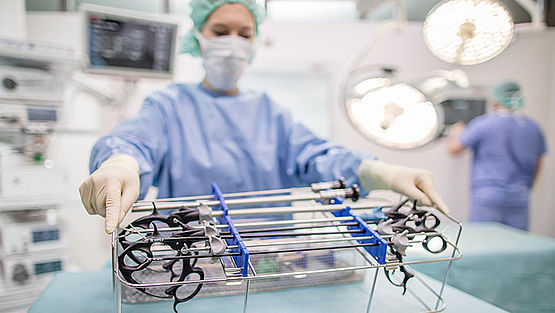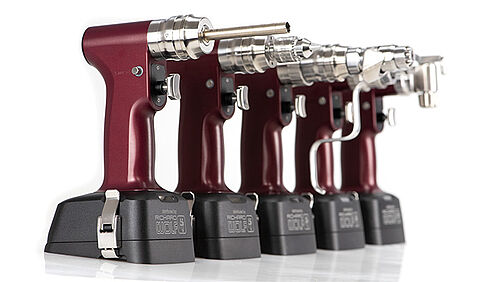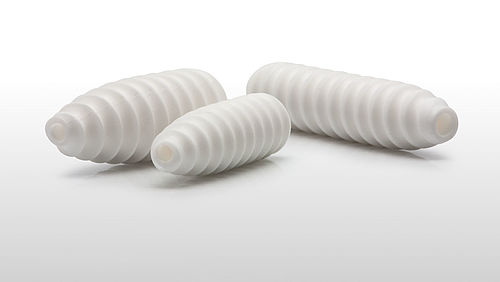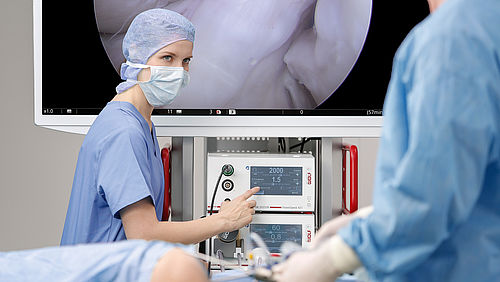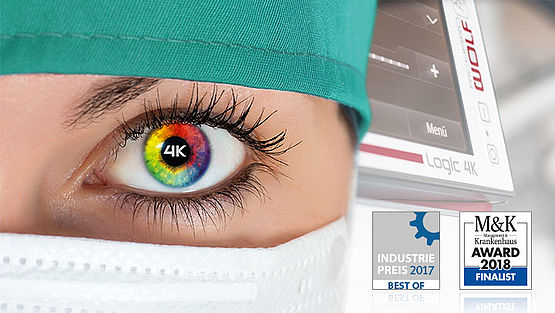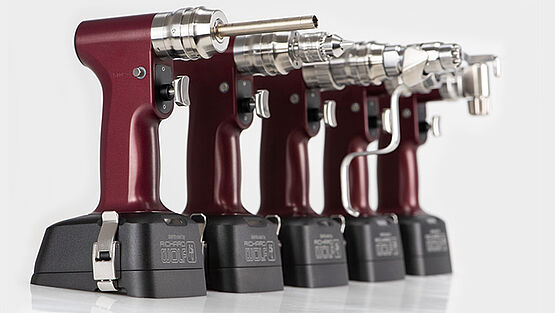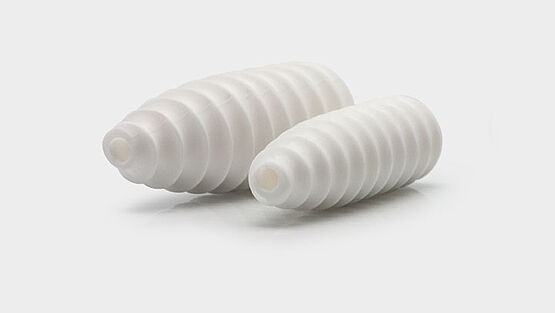Graftline
A Wealth of Options
Graftline the innovative designed instrument and implant system from Richard Wolf provides the versatile, medical platform for successful reconstruction of anterior and posterior curciate ligaments. Graftline offers highly specialzed, partly patented technology for an enormous range of surgical opportunities.
Fixation with choice:
Graftline provieds a choice of the ideal fixation method for the cruciate ligament graft without having to spend time carrying out adjustments. A tried-and-tested selection of fixing implants is available for fixation.
Unique perspectives:
Graftline gives surgeons access to all methodological channels - from standard techniques to innovative specific solutions. BTB, BT grafts, hamstrings or allografts, oval tunnel technique and hollow-burr technique: One System - A Wealth of Possibilities.
Detailed planning to offer four different complete sets - dedicated to the different surgical approaches. One Basic-Set with the standard instruments for knee arthroscopy combined with 3 specifically designed instrument sets for cruciate ligament reconstruction.
Four sterilization baskets with logical allocation of instruments facilitate safe reprocessing of the valuable Graftline instrument setas well as always providing the necessary overview and orderly access.
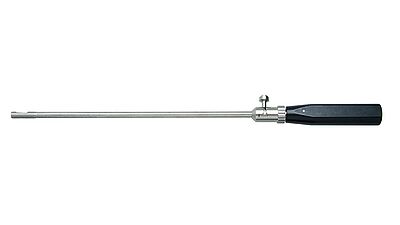
Semitendinosus tendon and/or Gracilis tendon
With an increased proportion of uses, the semitendinosus and/or gracilis tendon (hamstrings) is still the standard technique in modern cruciate ligament reconstruction. After an incision on the pes anserinus, the tendons are dissected free and released from the muscle structure using a tendon stripper. For this purpose, Richard Wolf offers a distally lockable universal tendon stripper with cutting function as well as a distally ring-shaped closed standard tendon stipper.
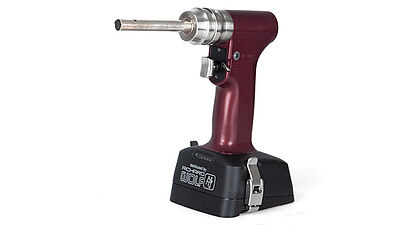
Quadriceps tendon
The quadriceps tendon used with increasing proportion, which is suitable for both primary reconstruction and revision, is harvested via a horizontal or vertical incision over half the patella. The oscillating hollow drill machine operated with a power pack offers a unique removal technique for quadriceps transplants with Graftline. The surgeon benefits from a quick and standardized removal (cylindical shape) of the tendon with bone block, which hardly requires any post-processing.
Patellar tendon
In order to be able to use the patellar tendon for the reconstruction of the anterior cruciate ligament (ACL) and the posterior cruciate ligament (PCL), the central third of the tendon with the attached bone blocks is removed. For this BTB (Bone-Tendon-Bone) extraction technique, Graftline with the battery-operated oscillating hollow drill offers advantages for the user. Both bone blocks can be removed with a standardized diameter and implanted without significant post-processing effort.
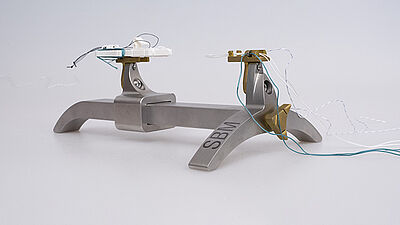
Arthroscopic Workstation
The Graftline workstation was developed to ensure the greatest possible efficiency in tendon preparation. It is irrelevant whether the transplant is to be surgically fixed with a Bioactif interference screw, a pull-up button or press-fit, suitable mounts are available for all fixation systems and simplify the preparation. The modular system can be configured according to your own needs.
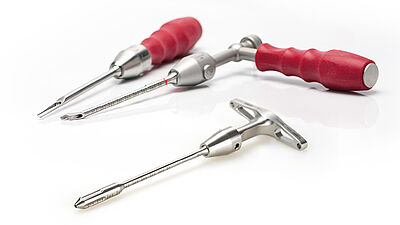
Modular handles
The Graftline equipment includes two high-quality handles which connect to the various instruments with an intuitive click connection mechanism. Thanks to this modular design, a few simple steps meet all the requirements of the operator and technology. Fast intraoperative instrument changes are thus completely guaranteed and the volume of the corresponding reprocessing baskets is reduced. The high-quality design impresses with ergonomics, robust workmanship and precise handling.
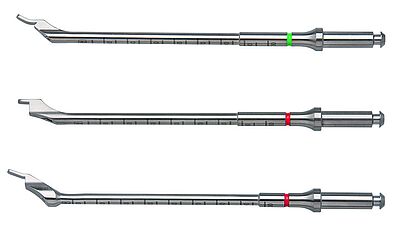
Femoral alignment devices
For the reconstruction of the anterior cruciate ligament with Graftline instruments, drill wire guides are available for an anteromedial access to the notch as well as for the transtibial portal. The corresponding different offsets can be easily distinguished by the colored markings on the proximal end of the instrument. For the reconstruction of the posterior cruciate ligament via the anterolateral portal, the instrument set also contains colour-coded aiming devices with different offsets, the open aiming plate ensures a clear view. Thanks to the innovative interface with the modular handles, these can also combined as desired.
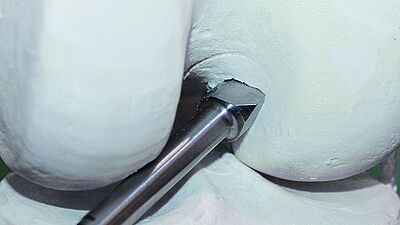
Universal tunnel notcher UNICRACKER
The notch in the femoral drill channel guides the interference screw better when it is fixated and prevents the transplant from rotating around the screw. At the same time, the bone can be impacted.
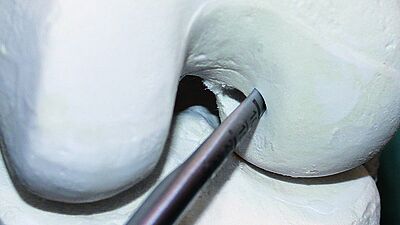
Notch gouge
For separating a bone chip in the femoral drill channel. The screw is now placed between bone chip and bone and does not press directly on the graft.
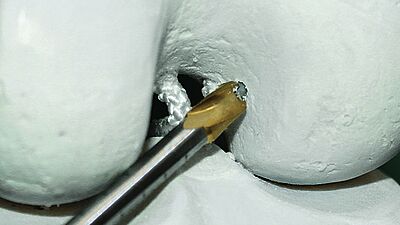
Instruments for creating oval channels
Graftline includes a complete set of instruments which gives the opportunity to shape the femoral drill channel in an oval shape on the joint side. As a result, the femoral insertion surface of the anterior cruciate ligament is reproduced more anatomically, similar to the two-bundle reconstruction. Special drill wire guides also ensure the optimal positioning of the oval drill channel with this technique. For this purpose, tunnel rasps are available after the primary creation of the drill channel in order to shape the insertion surface.

Compactors
In order to prepare the drilling channels for a press-fit fixation, the spongy bone portion is compacted with special compactors. This impaction is particularly relevant for the femoral tunnel with softer bone material. In order to ensure adequate dilatation, the drill channel is initially made smaller, then the appropriate compactor is driven in and the blind hole is dialted to the transplant diameter. The available sizes correspond to the respective sizes of the hollow drill for transplant harvesting.
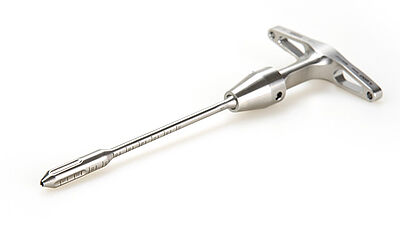
VKB / HKB cross impactor
The newly designed cross impactors from Richard Wolf are characterized by high-quality workmanship and the tried-and-tested interface to the handles of the Graftline instruments. In combination with the newly developed T-handle, they can be driven in more easily to impact the drill channels. The cloverleaf contour here again favors driving into the borehole is compacted over the entire circumference. The densification of the bone substance in the drill channel causes the transplant to sit more firmly and promotes the healing process.

Tibial allignment devices
Developed to meet the needs of experienced cruciate ligament specialists, the target devices from Richard Wolf have unique mechanical stability. The always precise positioning of the drill channel with a simultaneously adjustable entry angle into the tibia enable flexible use of our aiming device. In addition to the two variants of the standard aiming bow for ACL reconstruction, special aiming bows for double-bundle reconstruction and an aiming bow for PCL reconstruction are available. These are modular and can be connected to the basic device as required.
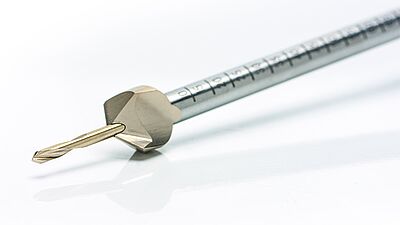
Cannulated Drills
With the Graftline Instrumentarium, head drills in all standard sizes are available for creating tibial and femoral drill channels. The TiN-coated drills are characterized by a corresponding longevity. The cannulation of the drills enables the precise installation of the drill channels using a previously inserted drill wire. The drills can of course be used with the drilling and milling machines from Richard Wolf's Bee system II. Appropriate attachments ensure compatibility for this.
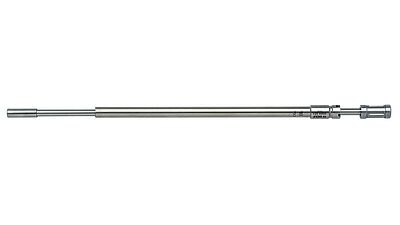
Supplementary set for removing cylindrical bone blocks
With the help of hollow drills, cylindrical blocks of bone can be obtained when creating the tibial canal. This removed spogiosa cylinder can be split into two or three parts, for example to fill the removal defect in the patella. The standard target hooks are combined with a corresponding drill guide for this application. These ensure stable guidance of the target drill wires and hollow drills so that the precise positioning of the tibial canal is still guaranteed.
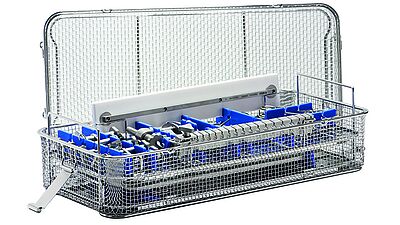
Sterilization and storage
Four sterilization baskets with logical assignment of the instruments not only enable safe processing of your valuable Graftline instruments, but also entsure the necessary overview and orderly access at all times. Two levels, marked with the contours of the individual instruments, simplify the assembly and still provide sufficient scope for an individualized combination of instruments.
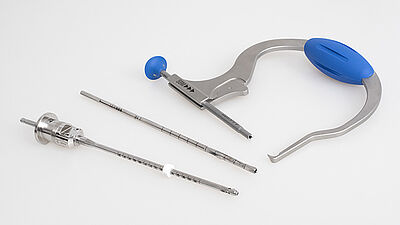
Femoral Outside-In Aiming Device and Retrograde Drill
The RetroTech® instrument set enablees surgeons to create femoral drill channels without the limitations of the classic inside-out technique. The femoral EVOLUTION aiming device has been specially developed for minimally invasive retrograde drilling and is precisely adapted to the anatomy of the femoral condyle. The RetroTech drill combines several innovations and thus makes it easier for the surgeon to use it thanks to the freely positionable femoral and tibial drill channel, a blind hole system that protects bone substance. Equipped with a retrograde blade, the blind hole can be created at the desired depth under arthroscopic control.
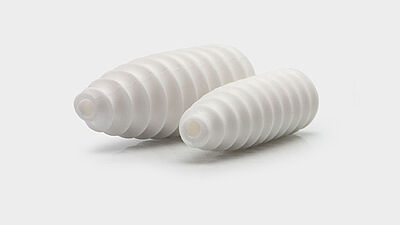
Implants and accessories
After the preparation is complete, the tendon grafts, which are reinforced with tension threads, are first drawn through the drilled holes into the joint and fixed either with special implants or with the implant-free press-fit technique. Richard Wolf offers a wide range of techniques and implants for fixation of the cruciate ligaments. The unique composite material OSTEOTRANS, which sets new standards for resorbable implants, play an outstanding role here.
Pressfit fixation
With Graftline, special instruments for precise positioning and atraumatic impaction of the bone block into the femoral canal are available for this fixation method close to the joint. The bone block can be rammed in using appropriate instruments both anteromedially and transtibially. The press-fit fixation is characterized by excellent bio-compatibility since only autologous material is used for blocking.
Fixation with interference screw BioactIF
The interference screws made of the OSTEOTRANS composite material can be used for both femoral and tibial fixation. The interference screws are indispensable both as a primary near-joint fixation technique when using a Semi-T graft and as a supportive technique with a BTB graft. The bioresorbable composition enhances the process of osteointegration and leads to rapid healing of the implant into the surrounding bone structure.
Fixation with PullUP button
With the length-adjustable suture loop, the PullUP button ensures quick implant fixation. Secured by the unique "Chinese finger-drop" principle on the pull loop of the button, it enables simultaneous pulling on both pull sutures, which optimally pulls the transplant into the entire drill channel length. Pre-operative planning and measuring of the borehole are now a thing of the past.
Convincing technology
A new instrument solution supplied only by Richard Wolf to meet all the requirements of the surgeon and provide an exceptionally complete system.
Fixation with choice
Graftline provides a choice of the ideal fixation method for the cruciate ligament graft without having to spend time carrying out adjustments or modifications. A tried-and-tested selection of fixing implants is available for fixation.
Unique perspectives
Graftline gives surgeons access to all methodological channels - from standard techniques to innovative specific solutions. BTB, BT grafts, hamstrings or allografts, oval tunnel technique and hollow-burr technique: One System - A Wealth of Possibilities.
Other products you may be interested in


